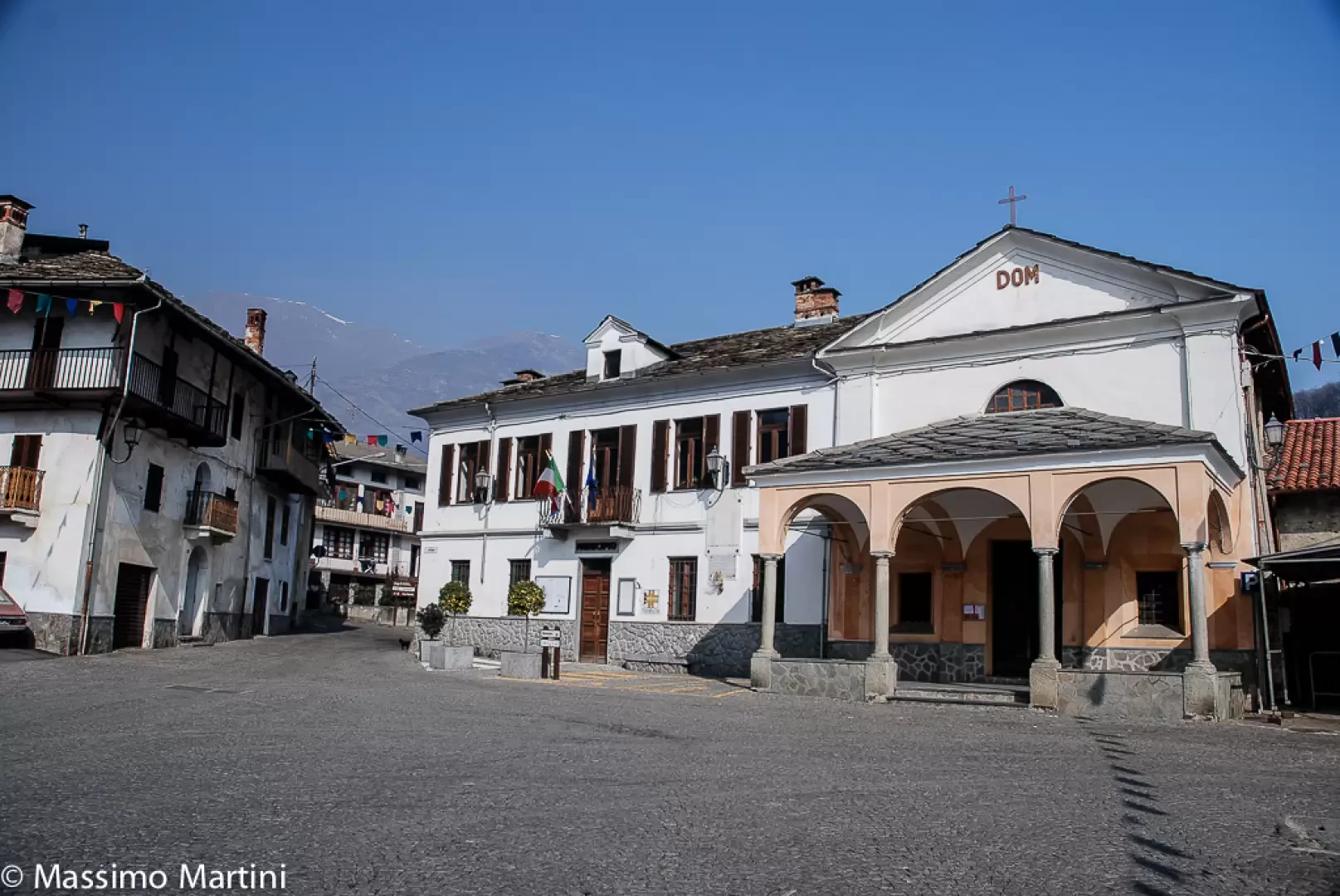Brosso

Access
The town can be reached from Turin (approximately 70 km) via the Turin-Aosta motorway, exiting at Ivrea, from where it continues along the Valchiusella provincial road in the direction of Traversella. Public connections are provided by bus lines operated by local companies, while the nearest railway stations are in Ivrea and Strambinello. The nearest airport is Turin-Caselle.
.Introduction
Brosso is a small municipality in Valchiusella, in the metropolitan city of Turin, located at an altitude of 797 metres on a natural terrace overlooking the Ivrea morainic amphitheatre. Its territory, covering an area of 11.14 km², is located in the north-eastern sector of the Canavese area, in an environmental context rich in chestnut woods and alpine meadows that reach up to Mount Gregorio, the highest altitude of the municipal territory at 1955 metres. The main village, compact and cosy, retains the typical appearance of Piedmontese mountain villages, with cobbled streets and stone houses, bearing witness to a long mining and metallurgical tradition that has profoundly marked local history.
.Description
The history of Brosso has its roots in the early Middle Ages, when it became the seat of the castle of the Counts of San Martino, a noble family that exercised control over much of the valley. Mining activity, documented as far back as the 13th century, was at the heart of economic life for centuries: in 1497 the heads of the village drew up the Mining Statutes, a code regulating the exploitation of mines and woods. In the 17th and 18th centuries, the ironworks of Brosso and the neighbouring villages supplied the House of Savoy with iron, thanks to a local working technique known as 'alla brossasca'. The industrial revolution, with the introduction of blast furnaces, marked the demise of traditional metallurgy, but mining continued with the search for pyrite, used for the production of vitriol and sulphuric acid, until the mines were finally closed in 1964. Today, the Brosso Mineralogical Museum, housed in the historical Ca'd Martolo building, preserves documents and instruments that tell of this long metallurgical past.
In architectural and artistic terms, the main building of worship is the parish church of San Michele Arcangelo, dating back to the 12th century. Built on a panoramic terrace, it is also mentioned by Leonardo da Vinci in his travel notes through Canavese. The building, enlarged in later centuries, houses valuable works of art and a Romanesque bell tower dominating the valley. Around the village there are several hamlets and testimonies of ancient mining activity, including smelting furnaces and tunnels that can now be visited in part thanks to recovery projects such as 'Memories of Iron'.
The current economy of Brosso is based on small-scale agriculture and handicrafts related to stone working, still alive thanks to the presence of historic quarries. Tourism has taken on a growing role, favoured by its proximity to Ivrea and the nature trails that climb the Valchiusella, ideal for excursions and panoramic views of the Canavese and the morainic amphitheatre. The surrounding environment, characterised by large forests and extensive meadows, offers diverse habitats that are home to a rich alpine fauna. The interest in geology and the technical and social heritage linked to mining makes Brosso a popular destination for study and cultural experience.
Information
Area: 11.14sq km
Altitude:797m
Maximum elevation: Monte Gregorio (1955m)
Number of inhabitants: 472
Name in dialect: Breuss
Inhabitant name: brossesi or brossolesi
Patron Saint:St. Michael (26 September)
Website: www.comune.brosso.to.it
Webcam:
Bordering municipalities: Borgofranco d'Ivrea, Lessolo, Meugliano, Quassolo, Tavagnasco, Traversella, Trausella, Vico Canavese